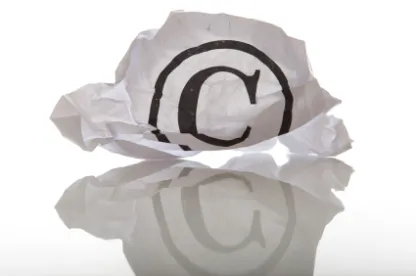On March 13, 2020, the United States Court of Appeals for the First Circuit held in Photographic Illustrators Corp. v. Orgill, Inc. that a copyright licensee given the unrestricted right to grant sublicenses may do so without using express language.[1] Specifically, the court held that a sublicense may be implied by the conduct of the sublicensor and the sublicensee.[2] Orgill presents the first ruling by a circuit court on whether copyright sublicenses can be implied in the absence of express permission from a sublicensor.[3]
The dispute underlying Orgill originates from a license Photographic Illustrators Corp. (“PIC”), a provider of commercial photography services, granted to the lightbulb manufacturer Osram Sylvania, Inc. (“Sylvania”), entitling Sylvania to use PIC’s copyrighted photographs of Sylvania lightbulbs.[4] PIC’s license to Sylvania provided that, in exchange for approximately US$3 million, Sylvania would receive a “non-exclusive, worldwide license in and to all the Images and the copyrights thereto to freely Use, sub-license Use, and permit Use, in its sole and absolute discretion, in perpetuity, anywhere in the world,” subject to the requirement that the photographs be attributed to the PIC photographer who created them.[5] Sylvania and its dealers and distributors used PIC photographs to market and sell Sylvania products.[6] One such distributor, Orgill, Inc. (“Orgill”) requested from Sylvania PIC photographs of its lightbulbs in order to use them in Orgill’s online and paper catalogues.[7] In response, Sylvania made the requested photographs available to Orgill, but did not enter into a written agreement and did not alert Orgill as to PIC’s requirement that all photographs be attributed to their photographer.[8]
As a result Orgill’s failure to attribute the PIC photographs to their photographer, PIC sued Orgill in the District of Massachusetts for copyright infringement under 17 U.S.C. § 501, violations of the Digital Millennium Copyright Act (DMCA), and false designation of origin and false advertising under the Lanham Act.[9] PIC also sued a number of other Sylvania distributors and dealers, whose suits were consolidated and referred to arbitration.[10] The District Court granted summary judgment to Orgill on the DMCA and Lanham Act claims, and, following the arbitrator’s ruling in the related consolidated suit (for which the Orgill case was stayed), the District Court granted Orgill summary judgment on the copyright infringement claim.[11] Specifically, the court held that Sylvania had granted Orgill an implied sublicense and that the attribution restriction was a covenant rather than a condition, thereby barring PIC’s recovery on theories of copyright infringement or contract.[12] PIC proceeded to appeal the grant of summary judgment on the copyright claim to the First Circuit, arguing
-
that even though Sylvania had the general right to sublicense the photos, in this instance Orgill lacked a sublicense because sublicenses must be express rather than implied, and
-
that there were issues of fact as to whether Orgill had obtained Sylvania’s permission, whether express or implied, to use the PIC photographs, sufficient to defeat a grant of summary judgment for Orgill.[13]
The First Circuit’s core holding in Orgill, which the Court characterized as “one of first impression in the circuit courts,” is that “where a licensor grants to a licensee that unrestricted right to sublicense and permit others to use a copyrighted work, a sublicense may be implied by the conduct of the sublicensor and sublicensee.”[14]
In evaluating whether Sylvania granted Orgill an implied copyright license, the court emphasized that the text of the Copyright Act does not require that a sublicense be expressed through specific language.[15] In the copyright licensing context, the circuits apply with varying strictness a three part test requiring that:
-
the licensee request the creation of the work;
-
the licensor create and deliver the work; and
-
the licensor intend that the licensee distribute the work.[16]
In contrast to some other courts, the First Circuit made clear that, in its analysis, “[t]he touchstone for finding an implied license … is intent.”[17] The court rejected PIC’s argument that the three-part test should be “applied literally and inflexibly to assessing claims of an implied sublicense,” emphasizing that strict application of the three factors “would mean that there could rarely if ever be an implied sublicense because, for example, the putative sublicensee generally deals only with the licensee, and likely would not have requested the owner to create the copyrighted work.”[18]
The court made clear that, because copyright owners set the terms by which their copyrights are licensed, they can control whether and how those copyrights can be sublicensed.[19] It emphasized that, rather than granting Sylvania the right to “sub-license Use, and permit Use, in its sole and absolute discretion,” PIC could have instead required that any sublicenses be express or even in writing, or it could have prohibited sublicensing altogether.[20] The court proceeded to reject PIC’s policy arguments in favor of requiring express copyright sublicenses, e.g. that express sublicensing furthers the goals of the Copyright Act by bolstering the artist’s right to control his or her work, and that it enhances predictability and certainty of copyright ownership.[21]
After holding that copyright sublicenses can be implied by the conduct of the sublicensor and sublicensee, the court proceeded to affirm the District Court’s grant of summary judgment to Orgill, finding that, in keeping with the terms of the PIC-Sylvania license, Sylvania intended to sublicense the PIC photos to Orgill.[22] In holding that copyright sublicenses can be implied through the conduct of sublicensors and sublicensees, the First Circuit has both ruled on an issue of first impression for the circuit courts and elaborated an expansive view of how copyright sublicenses can be created. The important takeaway here is that licensors of copyrighted content of all kinds should pay special attention to sublicensing provisions and should include any desired restrictions and limitations in those provisions.
By David J. Byer and R. Nicholas Perkins
Footnotes:
-
Photographic Illustrators Corp. v. Orgill, Inc., No. 19-1452, 2020 WL 1226489, at *1 (1st Cir. Mar. 13, 2020).
-
Id. at *6.
-
Id. at *1.
-
See id.
-
Id.
-
Id.
-
Id.
-
Id.
-
Id. at *1–2. PIC also sued an Orgill dealer, Farm & City Supply, LLC, that was eventually dropped from the case for being an innocent infringer.
-
Id. at *1.
-
Id. at *2.
-
Id.
-
Id. at *3.
-
Id. at *6.
-
Id. at *3.
-
See id. at *4.
-
See id. (quoting John G. Danielson, Inc. v. Winchester-Conant Props., Inc., 322 F. 3d 26, 40 (1st Cir. 2003)). In discussing courts’ implementation of the three-factor test, the court noted that, while the Second and Seventh Circuits rigidly apply the request, delivery, and intent requirements, the Fifth and Ninth Circuits have embraced a less rigid application of the test, finding implied licenses even where not three elements of the test were not met.
-
See id. at *5.
-
Id.
-
Id.
-
See id. at *5–6.
-
See id. at *6.




 />i
/>i
